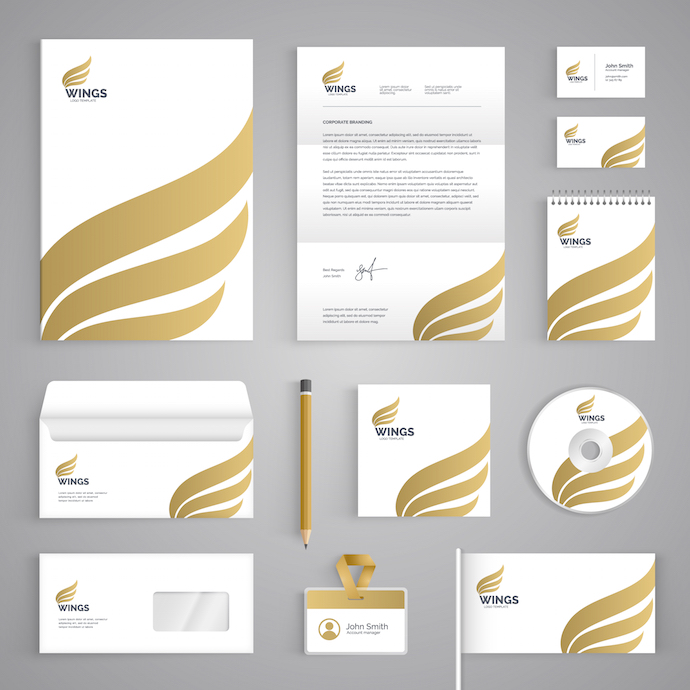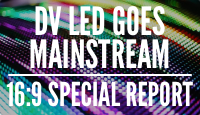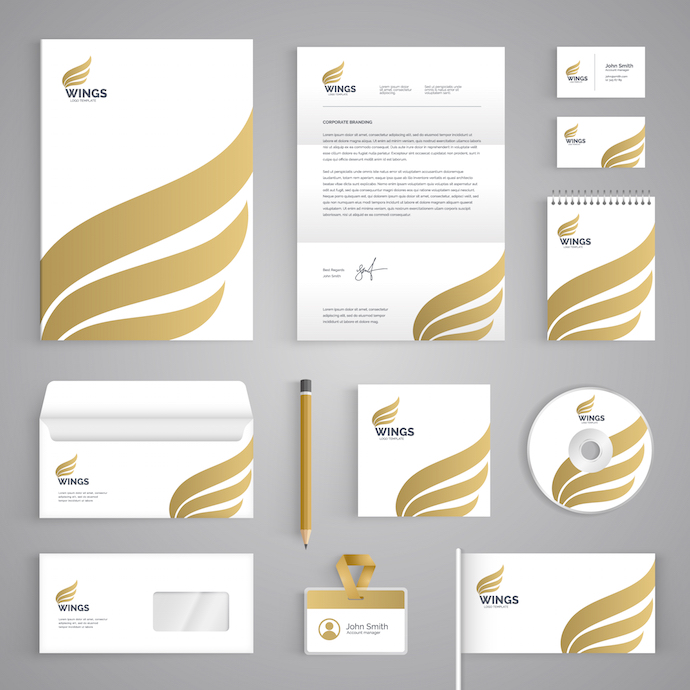
6 Strategies to Keep Brand Consistency With Your Digital Signage Work
April 18, 2016 by guest author, Sean Levy

Guest Post: Irfan Khan, Skykit
Brands, as most of us already understand, reach far beyond the company’s logo.
While the logo might be the entry point, the most successful brands promote a narrative.
Everything from the look to the core values to the marketing efforts work together to make a coherent whole.
Eateries like Taco Bell and Denny’s have embraced their status as the dining option of choice for the witching hours, slanting their marketing towards a younger demographic. Denny’s even has a supremely weird Tumblr page where they remake memes in their own surrealist image.
Meanwhile, Coca-Cola’s overall look hasn’t changed materially since they were founded in 1892, with an instantly recognizable script logo and a long-standing message of promoting unity. My mother still sometimes hums the “I’d like to buy the world a Coke” jingle, and today’s “Share a Coke with …” initiative is remarkably similar. That’s consistency!
And speaking of consistency: that’s one of the most important elements of making your brand recognizable.
Your brand should be consistent both internally (that is, elements don’t contradict each other: What if Nike’s logo was a sloth? It wouldn’t pair well with their “Just do it” tagline and sports-y image) and externally (that is, uniformly across all of your promotional platforms and materials, and maintained over time).
Why’s that so important?
Because a well-formed brand differentiates a company from its competitors.
It allows customers to see a company not just as a faceless corporation, but as an entity with a certain personality.
Customers feel like they have a relationship with a certain brand, and that in turn enhances brand loyalty.
As you’re striving to maintain brand consistency, make sure you don’t overlook your digital signage!
Not only is digital signage a chance to put your brand front-and-center from the moment customers walk in the door to the moment you leave, but having poorly designed and out-of-character content can damage your image.
That said, here are five ways for you to make sure your brand stays clear and central in your digital signage.
Maintaining Your Brand With Digital Signage
Avoid Generic Content
Especially when starting out with digital signage, there’s a temptation to resort to “wallpaper”—cheap, generic, readily available material for your screen—in order to ensure there’s something fresh on-screen at all times.
Digital Signage Today warns that such content is not only easy to ignore and thus useless in promoting your brand, but can in fact harm the effectiveness of your network.
That’s a matter of simple math: if ten percent of your content is, say, generically pretty landscapes, ten percent of the time viewers will be seeing material that offers no useful information and doesn’t speak to your brand.
And they may be less likely to take a second look when actual content is on-screen.
While it may be more work, it’s important to make sure that all of your content points back to you.
That can be something as small as including your Twitter handle at the bottom of every slide, or something as major as custom-crafting every single piece of content to be perfectly on-brand.
You don’t necessarily need more content—it’s better to have your content loop more often than to use generic filler material.
But whatever you do, don’t just wallpaper.

Use the Same Content Across Locations
If your business has more than one location, it’s important to have the same or very similar digital signage content in each.
This is part of creating a coherent experience for your customers and clients. Familiar signage reminds them that they’re in a place with a familiar identity—an identity they trust. They know what to expect.
This helps keep your brand unified even when the setting is different.
Of course you might have locally-relevant content for a store, neighborhood, or region, but the concept is the same: instill the same recognition from the other touchpoints people have had with your brand, even if that was at a different location.
Keep a Consistent Look
It may be tempting, for simplicity’s sake, to use a theme you found online or that came with your content-creating software for your digital signage.
Three problems: that’s boring and lazy from the customer’s viewpoint, it’s a missed opportunity to brand content, and it can lead to incongruities between your overall brand and what’s on your screen.
For example, a vehicle parts supply store probably would wish to avoid delicate fonts, Instagram-style filters and shades of pink.
Nor do you want your look to vary from slide to slide, or depending on who created the content. That’s just ugly.
A little customization goes a long way.
I put together a separate list of 20 free tools you can use to create beautiful content for digital signs without using a graphic designer. And you can get your content up in less than 15 minutes. Get the list of tools here.
If your company has a style guide, that’s your place to start to find guidelines for producing on-brand content.
Otherwise, it’s worth it to take the time and decide how you’re going to create a uniform look for all of your content.
- Color Scheme: Your company probably already colors that they tend to use in their promotional material and décor. Use a neutral tone for backgrounds, a color associated with your brand for contrast, and one other color that fits the brand and looks attractive as an accent. To make sure you’re always using the same red, define it using a hexadecimal code. If you want to sample a color from your logo or website, a Chrome extension such as this will be helpful.
- Preferred Fonts: If the brand is already defined typographically, go with those fonts. Otherwise, choose a sans serif font to be used for most content, and one or two other fonts from different font families for emphasizing elements. (No more than two fonts per slide!)
- Template Slides: Consider creating a collection of blank template slides into which content can be inserted in order to guarantee a uniform look. (You’ll want a variety so all of your content doesn’t look exactly the same.) Whatever program you’re creating content in may have some built-in options.
- Imagery: Decide what sort of pictures you want to include in your content. Would you prefer exclusively black-and-white images? Should they ever include people? Is clip art ever acceptable?
Create a Content Guide
Provide guidelines to make sure your written content stays in the brand’s voice.
- Tone: Are you sassy? Formal? Always positive?
- Focus: Is plain, simple information preferred, or can you have a little personality?
- Word choice: Are there certain words you prefer to avoid? Are there specific words associated with your brand?
- Style guide: Should content conform to a specific style guide, such as AP or Chicago?
- Terminology: Make sure commonly-used terms and phrases are always spelled, worded, and capitalized the same way.
Make it All Readily Available
Once you have all of these guidelines created, make sure they’re available to everybody who could conceivably create content for your digital signage.
You could create print copies, but it’s easier and more cost-effective to share online. This document or set of documents should also contain necessary files such as logos, icons, and images.
Consider posting them on Google Drive and sharing the link to your content creators.
Be open to feedback! Especially if you aren’t a marketer or designer, other members of your team may have useful suggestions for improvements.
As trends come and go, and your company tweaks its own brand, your guide should change as well. That’s another reason why cloud-based sharing is advantageous: it allows any changes to be distributed instantly to all who have access to the document.
Integrate Your Social Media
Need more in-voice and fresh content?
Try tapping a resource you probably already have: your social media accounts.
Your Twitter feed or Facebook page should be updated frequently, and should already have a particular voice that reflects your brand’s personality.
Not only that, but with modern digital signage software, displaying a live and/or curated feed on your screens is simple. Many social media networks have an API that developers can use to develop a custom module for your signage.
If you choose to display posts from followers, that reinforces your customers’ sense that your brand is personable and that they have a personal relationship with your company, fostering loyalty. In fact, 55 percent of Americans state they’re more likely to stick with a brand they follow on social media.
And, bonus, by displaying your social media feeds, you’ll remind your visitors that they exist—which should translate into new followers and an expanded reach.
Make sure to show your username or handle, and consider displaying a QR code or shortened link so interested customers can follow you instantly.
Conclusion
As you’ve seen, maintaining brand consistency is an important part of fostering customer loyalty.
And, when it comes to brand consistency, it’s important not to overlook the heavily visual element provided by digital signage.
Don’t fall into the trap of posting easy-to-make but generic content.
Instead, take the time to create guidelines for both the visual elements and written copy of your content, with an eye to matching your company’s overall personality and look. (Take advantages of pre-existing resources here, such as style guides, promotional materials, and social media accounts.) Make sure these guidelines are available from person to person, and from location to location.
While it is work, it’s worth it to maintain an on-brand experience for your customers.
Which of these strategies do you think you’ll try out? Share with us in the comments.





Leave a comment